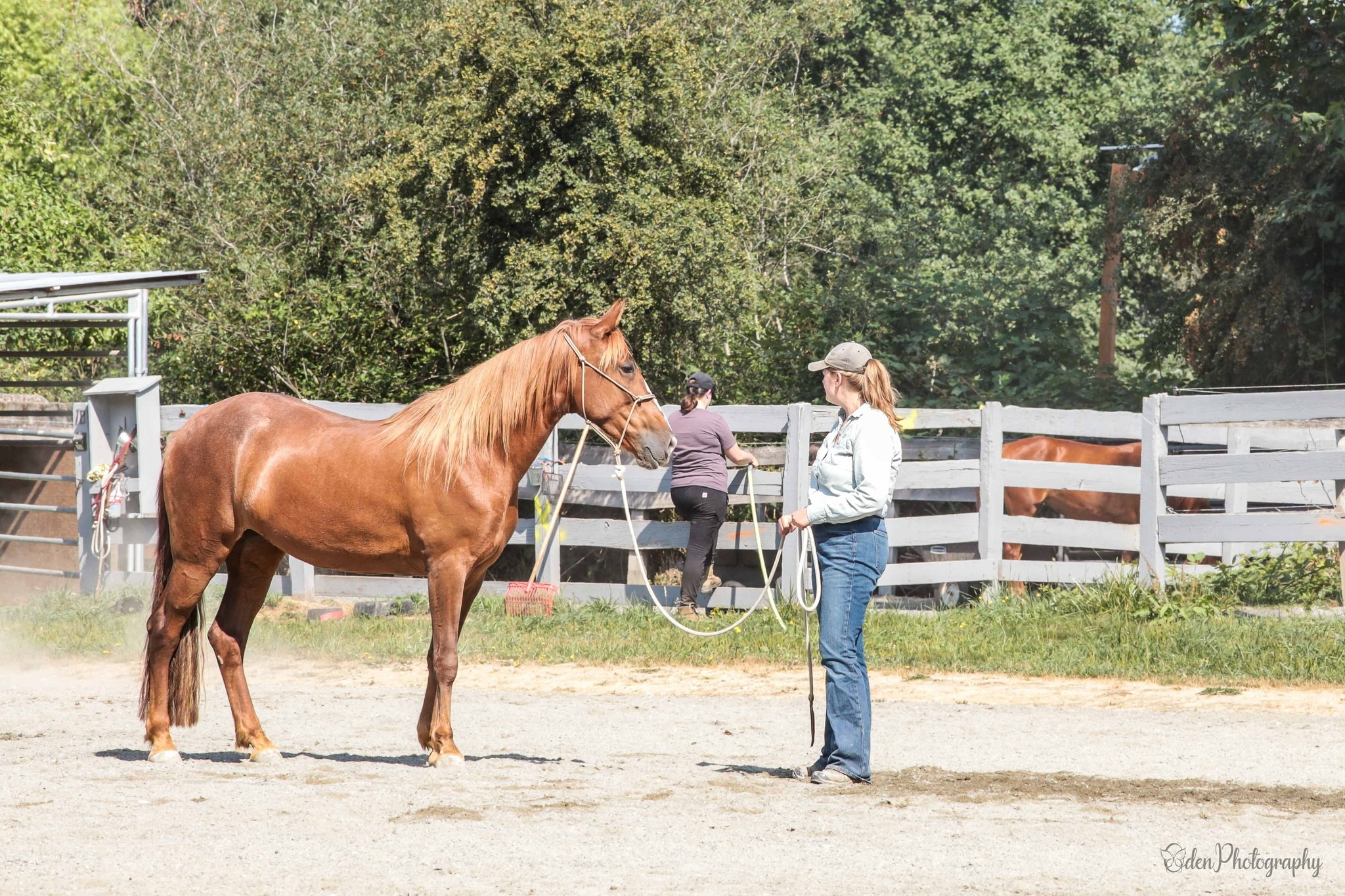Having the chance to work with Deja Vu — a horse who has not had much in the way of experience with this style of horsemanship — during the recent Joel Conner clinic was a challenging and tremendous learning experience for the both of us.
At first, working Deja was like working a 2x4. Her rigidity was based entirely in insecurity, an unwillingness to let go of any part of her field of vision. As Joel says, ‘a horse’s emotional stability comes from their physical mobility,’ meaning their freedom and peace is tied directly to how able they feel to move in any one direction at any one time. Deja might as well have had concrete blocks attached to each hoof with how stuck she felt. I was determined to begin chipping away at them and reassure her that she could move in ways that had been previously unexplored by her for the fifteen years she had been on this earth.
Fifteen years is a long time to become set in your ways. But horses prove time and time again just how willing and able to change they are, even when their habits become calcified. The five days of working with Deja would be a perfect showcase of a horse’s tremendous capacity to learn and adjust.
I had been working with Deja on catching in the paddock, and so getting her to hook on to me at the beginning of each of our sessions was less a mountain and more a hill. The act was made a bit more complicated by the addition of her paddock mate Cleopatra, the two of them liable to get running if pressure was applied to just one. But as a testament to the hooking on work we had done previously, Deja was quite willing to look to me with very little prompting, even as her friend skittered around her.
On the end of a line, Deja was a bit less willing to forget about her herdmate. If the two strayed too far from one another, it was all craning necks (and that Tennesee Walker headset is HIGH) and ear-splitting whinnies. It took many gentle reminders of what we were doing (your hindquarters please, Deja) to get her flaxen head back in the game, so to speak. Over the course of the clinic, we moved further and further away from Cleo, and Deja was able to find support in me when she began to get nervous about being away from her friend.
Deja is also tremendously heavy on the forehand. As soon as she stops any motion, she shifts all her weight forward, dumping all 900lbs onto the front half of her body. A main focus of the weekend was trying to help her readjust her weight backwards over her hind, and while there is still far to go, we did make some forward progress. Sometimes she will end a motion by picking up her front hooves instead of planting and twisting them with enough force to change the earth’s rotation. How? Hindquarters, hindquarters, hindquarters. Hindquarters to forward back to hindquarters, trying to get her to redistribute her weight a bit more evenly and feel more secure in her ability to move her feet. With repetition and some decent releases, she began to gain an understanding, and became a bit more soft and responsive to my asks – and start to shift her weight back, sometimes.
Touching Deja with the flag up until this point had been a hard no-go. She was tremendously worried about the soft bit of fabric on the end of a pole, worried enough that at first attempt to pet her on the shoulder with it she nearly dislocated mine in time with her attempt to get away. We would have to take things slow, for both our sakes.
The first place she allowed for the flag to touch her was on the forehead, the same area that she had come to recognize as a wonderful place for a pet. Then, with caution, I was able to work the flag down her neck. Next it was about getting ‘out’ when things felt good, and slowly asking more of her. The entire flag exercise is to teach the horse to differentiate between when a stimulus means something and when it doesn’t. Removing the flag when she is in a panicky mindset would only reinforce that the flag is something that should make her nervous. Instead, I waited with her until she relaxed – and sometimes this was a minute change – before removing the flag. By the end of the first session, she had come to accept the flag petting down her back and off her hind, something that would have never been possible at the start.
Each day, she gained a bit more confidence in herself, and by the end of Sunday’s session, she was allowing for more careless pets of the flag, and even coming to an unhurried stop with it petting her.
Deja and myself still have a long road ahead of us, but the tools we gained over the weekend helped to lay a pretty solid and hopefully foundation for what the future will look like. This mare is sweet and smart, and it is a pleasure being able to help her feel a bit more comfortable in her beautiful skin!


